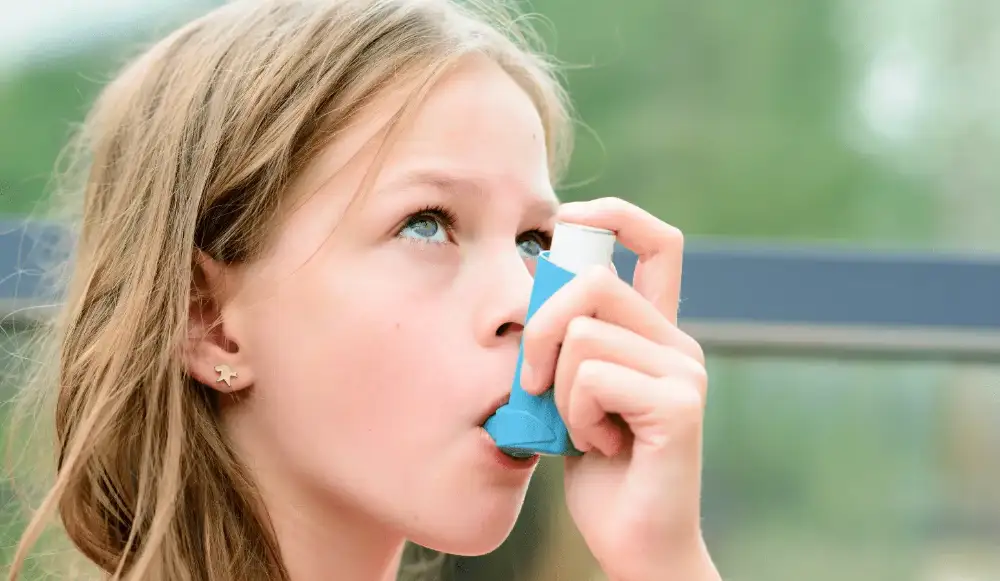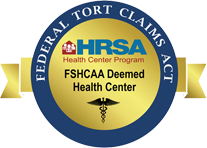Asthma is an inflammatory disease of the airways to your lungs. According to the CDC, about 25 million Americans have asthma. In America, one child in 12 has asthma, making it the most common chronic condition among kids.
Asthma symptoms vary from person to person, but the most common symptoms include shortness of breath, chest tightness or pain, wheezing, trouble sleeping due to shortness of breath, and coughing. Colds or any upper respiratory virus can make the coughing and wheezing worse. Signs that an asthma attack is worsening include the need to use a rescue inhaler more frequently, symptoms that are more bothersome and frequent, and increasing difficulty of breathing. If there is rapid worsening of shortness of breath or wheezing, no improvement after using a quick relief inhaler, or shortness of breath when doing minimal physical activity, seek medical help immediately.
The exact cause of asthma is not known but is thought to be a combination of environmental and inherited factors. Cold, dry air while exercising, chemical fumes, gases, dust, pollen, smoke, mold spores, other airborne substances, and strong emotions (shouting, laughing, and crying) or stress can trigger or aggravate asthma symptoms. Certain medications (such as beta blockers, ibuprofen, aspirin and naproxen), sulfites and some preservatives added to some types of food and beverages (shrimp, dried fruit, processed potatoes, and beer and wine), and gastric reflux problems can also trigger asthma symptoms.
Risk factors thought to increase the chance of developing asthma include having a parent or sibling with asthma; being overweight; smoking; exposure to secondhand smoke; having another allergic condition (hay fever, atopic dermatitis, etc.); fever that causes runny nose, congestion, and itchy eyes; exposure to exhaust fumes or other pollution, and exposure to chemicals. Complications of asthma include interference with sleep, missing work or school, permanent narrowing of the bronchial tubes, emergency room visits and hospitalizations for severe attacks, and side effects from long-term use of certain medications to stabilize severe asthma.×
Your health care provider will use a variety of criteria to determine if you have asthma. They will take your health history, do a physical exam and usually perform some breathing tests. They might also do a skin test for allergies since allergies can increase your chance of having asthma.
One of the most common tests for asthma is spirometry where you blow into a device that measures the speed of the air you breathe out. This test is not typically done on kids under 5 because it is difficult to get an accurate reading. Instead, a child might be prescribed asthma medication and if the symptoms improve then it might be determined that the child has asthma. An adult may be prescribed a bronchodilator or other asthma medication if the tests indicate asthma.
There is no way to cure or prevent asthma but there are things that can be done to help prevent asthma attacks. Making an asthma action plan with you provider and following it is important to managing asthma. Make sure you are current on your vaccines, especially flu and pneumonia vaccines. Identify your asthma triggers and take steps to avoid those triggers. Quit smoking, exercise regularly, eat a well-balanced diet, maintain a healthy weight, and manage stress. Learn the warning signs of an impending attack and act quickly to treat it. Take your medications as prescribed and finally, pay attention to how often you use your quick-acting inhaler. If you are relying on your quick acting inhaler too much, then you need to see your doctor about adjusting your treatment plan.
Candice Hutchins is an RN at the Health West Pediatrics clinic. She has been a nurse for seventeen years with most of her experience in Postpartum and well-baby nursery.

Don’t overlook bicycle safety this summer








